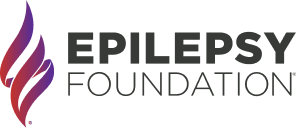Myoclonic Epilepsy in Infancy

What is myoclonic epilepsy in infancy?
- Myoclonic epilepsy in infancy is a condition that occurs in previously healthy toddler-age children. There is onset of myoclonic seizures between 6 months to 2 years, although occasionally as young as 4 months and up to 5 years old.
- Myoclonic seizures are the only seizure type at onset, although infrequent febrile seizures can occur in up to 30% of children.
- Seizures typically resolve between 6 months and 5 years after onset.
- There can be associated learning, motor, and behavioral difficulties, especially if seizures are not controlled.
How common is this condition?
- This is a rare condition and accounts for less than 1% of childhood epilepsies. This is likely a slight underestimate of the true frequency and some cases may overlap with epilepsy in children with myoclonic-atonic seizures (EMAS).
- Males are twice as likely to be affected as females.
- There can be a family history of epilepsy or a family history of febrile seizures.
How is the diagnosis made?
- Myoclonic epilepsy in infancy is diagnosed by key clinical and electroencephalography (EEG) features.
- This includes normal background EEG patterns. This means that there is no diffuse background slowing or regions with focal slowing.
- There can be evidence of an increased risk of generalized onset seizures, meaning generalized spike or polyspike-and-wave discharges, seen between seizures.
- During myoclonic seizures there is typically an associated generalized spike or polyspike-and-wave discharge seen on the EEG that lasts 1-3 seconds.
- Occasionally, after the myoclonic jerk, there can be loss of tone (or an atonia) associated with a drop or fall.
Seizure Types
- The typical seizures are myoclonic seizures that are described as brief sudden jerks of the extremities.
- In up to one-third of patients, seizures may be triggered by various frequencies of light (photosensitivity), as well as sudden noise or touch and can more often be seen during drowsiness.
- Children with photosensitivity may have seizures that are more difficult to treat.
What Testing is Needed?
- An EEG is a key component of the diagnosis.
- An MRI of the brain and genetic testing may be considered.
What is the cause?
A genetic cause is suggested and there are case reports of specific genetic changed identified including SLC2A1 and HCN4.
Treatment
Valproic acid is typically the anti-seizure medication of choice, although other broad-spectrum anti-seizure medications could also be considered.
Long-Term Outcomes
- Seizures typically resolve, although for some individuals there is recurrence of seizures in adolescence.
- These are typically generalized tonic-clonic seizures with bilateral extremity stiffening and jerking, although other types of seizures have also been reported. This occurs in 10-20% of children with a history of myoclonic epilepsy in infancy.
References
- Caraballo RH, Flesler S, Pasteris MC, et al. Myoclonic epilepsy in infancy: An electroclinical and long-term follow-up of 38 patients. Epilepsy; 2013. 54(9): 1605-1612.
- Campostrini G, DiFrancesco JC, Castelloti B, et al. A Loss-of-Function HCN4 Mutation Associated with Familial Benign Myoclonic Epilepsy in Infancy Causes Increased Neuronal Excitability. Front Mol Neurosci. 2018; 11:269.
- Epilepsydiagnosis.org
Resources
Epilepsy Centers
Epilepsy centers provide you with a team of specialists to help you diagnose your epilepsy and explore treatment options.
Epilepsy Medication
Find in-depth information on anti-seizure medications so you know what to ask your doctor.
Epilepsy and Seizures 24/7 Helpline
Call our Epilepsy and Seizures 24/7 Helpline and talk with an epilepsy information specialist or submit a question online.
Tools & Resources
Get information, tips, and more to help you manage your epilepsy.


